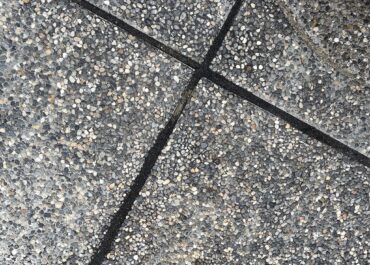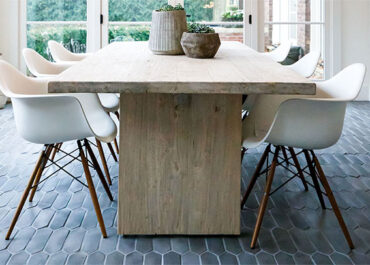
The use of porcelain pavers is growing more and more in the hardscape industry. Homeowners are starting to see the benefits of the material and choosing over the more classic options. But there’s an important question: can porcelain pavers be laid on sand?
The best installation option for pavers is what we call an interlocked system installation. This is done using a combination of gravel base and sand to form a bedding to support the pavers. This creates a structure capable of sustaining the heaviest weights.
So that is a very important question to answer, and it can be the defining factor to many homeowners. Interlocking system installations are cheaper and easier to perform. They also present better maintenance and repair options as time goes by.
So let’s talk about that possibility when it comes to porcelain pavers and give you a guide on how to perform your own installation.
Can Porcelain Pavers be Installed on Sand?
In fact, yes, porcelain pavers can be laid on sand.
Porcelain pavers can be installed on an interlocked system, just like any other paver.
The installation on sand creates a system that distributes weight. The pavers work together to support even the heaviest weights by shifting around to accommodate the weight, rather than simply resisting it.
Installations on sand are also easier to do on a DIY capacity. However, there are some concerns about DIY work when it comes to porcelain pavers.
Porcelain pavers are heavy, especially in their outdoor 2 cm thick variety, and they can be complicated to work with without help.
We always recommend to hire professionals in the hardscape business to help you with paver installations. As simple as the installation itself is, every installation has its own characteristic and problems, and working beside professionals is always the best way to ensure nothing wrong will happen.
Still, for a small patio, on an area that has no problems with drainage, it is fine to try and tackle the project by yourself, as long as you’re confident and have the proper tools and materials.
So let’s give you the guide on how to lay porcelain pavers on sand.
Porcelain Pavers: Installation on Sand Guide
Tools and Materials
Before anything, let’s give you a checklist on all the tools and materials you’re going to need.
- Protective Gear (Working Gloves and Protection Glasses)
- Measuring Tape
- Spray Paint
- Porcelain Pavers
- Wood Stakes
- Construction Line
- Level Line
- Shovel
- Geotextile Fabric
- Plate Compactor
- 2 1″ Steel Conduits
- 2×4 Screeding Board
- Polymeric Sand
- Broom
Step 01 – Preparation
By far, preparation is the most important part of the entire installation process.
Go outside, get your measuring tape, and start making the measurements of the area in which you intend to install your pavers.
Since you’re going to do excavations, make sure there are no utilities underneath the area. Contact the proper authorities in your region to have the information.
Make an outline of your area with spray paint and, now with proper measurements, you can go look for your pavers of choice. To know how many pavers you’re going to need, simply divide the area of your installation by the area of one single paver.
If it’s not a whole number, it means you’re going to have to cut some pavers. And, since you’re working DIY, we highly recommend you don’t try to cut any pavers, so make the proper adjustments to prevent that as much as possible.
Step 02 – Excavation
Now for the excavation part, which is the hardest one.
The most important part about the excavation is to ensure proper slope. To do that, you’re going to place two wood stakes in the ground, one at the “highest” point of your installation (the one closest to the building) and one at the “lowest” point (the one furthest from the building).
Now, tie the string line to the stake on the highest point, at the level you want your pavers to be. Take the line all the way to the second stake and tie it at the same height.
And now for the slope. For every 10″, you must add a 1¼” drop on the slope. Add together all your drops and lower your second line accordingly. Use the level line during this process to make sure everything is as smooth and leveled as possible.
Once that is done, you will have the proper height of your installation, and now all you have to do is excavate.
The depth of the excavation must be equal to the height of your pavers plus 7″.
Step 03 – Base
To start your base, you’re going to cover the hole with geotextile fabric.
With the geotextile fabric in place, you’re going to fill the hole with 6″ of 3/4″ gravel, going through it a few time with the plate compactor until everything is leveled.
Following that, place the 2 1″ steel conduits on the floor, approximately 6 feet apart from each other, and pour sand around them. Using the 2×4, screed the sand using the conduits as a base. Repeat this process until the entire area is covered in a 1″ leveled layer of sand.
Step 04 – Laying the Pavers
Now is finally time to finally lay your porcelain pavers.
Start from the bottom and slowly work your way through the entire installation using the “click and drop” method. This method consists in making the paver to be laid touch the ones previously laid, making the “click” sound, and then gently drop it in place.
Patience is the key here. Never shift the pavers in place once they are already set.
Step 05 – Final Touches
With the pavers set, now all that’s left to do is to add polymeric sand to the grout lines.
Pour the polymeric sand in the joint between the pavers until they are filled. Use a broom to sweep the sand around, to completely fill the joint lines and remove the excess afterwards.
Professional Help Installing Porcelain Pavers on Sand

Porcelain pavers can be laid on sand, even on DIY capacity. But, as we previously mentioned, each installation is unique and the best course of action is to have a professional by your side to help you. Porcelain pavers are heavy and can be difficult to work with.
Professionals can account for things you wouldn’t be able to and prepare for difficulties that might be faced during a paver installation.
We here at Eagle Pavers have been providing this kind of service around the Sarasota and Manatee counties, in FL, for the past 14 years, and we have helped many homeowners achieve the installation of their dreams.
If you’re around the area, why not get gives a call to help you as well?
Give us a call right now at +1 941-210-4192 or email us at sales@eaglepavers.us. We would be happy to hear from you.




